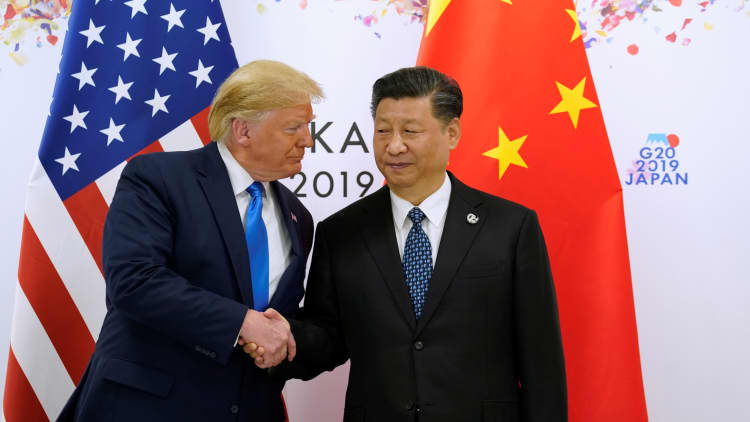
There may be winners and losers from a political point of view when it comes to the trade war between the U.S. and China. But the latest data shows that economically, both sides are losers. And they can help explain why there is more talk of a deal: Losses are mounting into the tens of billions of dollars for the U.S. and China.
Politically, President Donald Trump can boast that China has lost far more than the U.S. in dollar terms. Compared with the first nine months of last year, trade data released Tuesday showed U.S. imports from China have fallen a sharp $53 billion. U.S. exports to China are down just $14.5 billion.
Source: CNBC
But the U.S. exports much less to China than it imports. So even the much smaller drop is a bigger percentage fall.
In the first nine months of the year, U.S. exports to China are down 15.5% compared with the same period a year ago, a bigger drop than the 13.5% fall for Chinese imports.
Source: CNBC
Those averages mask real pain in individual industries. Compared with the first nine of months of 2017, before the trade war started, exports of minerals and ores to China have plunged 65% in 2019. Exports are off 39% for forestry products and 35% for livestock.
Source: CNBC
Meanwhile, U.S. agricultural exports have fallen by $2 billion. A $5.8 billion decline in exports of transportation equipment is likely linked to problems at Boeing with the 737 Max. It would be a longer lasting and deeper economic problem for the U.S. if it reflects changing Chinese preferences for aircraft.
The good news: Some of the hardest-hit industries could see a sharp bounce back if tariffs are relaxed and trade relationships warm. Some U.S. industries may have already found new markets.
The danger is if Chinese customers have already found new suppliers, meaning lasting damage has been done to U.S. exporters.


